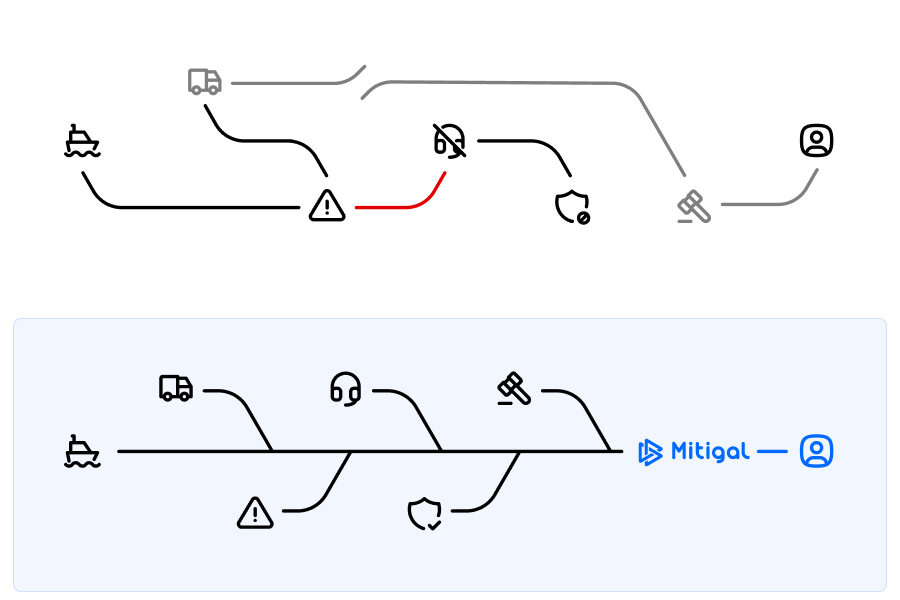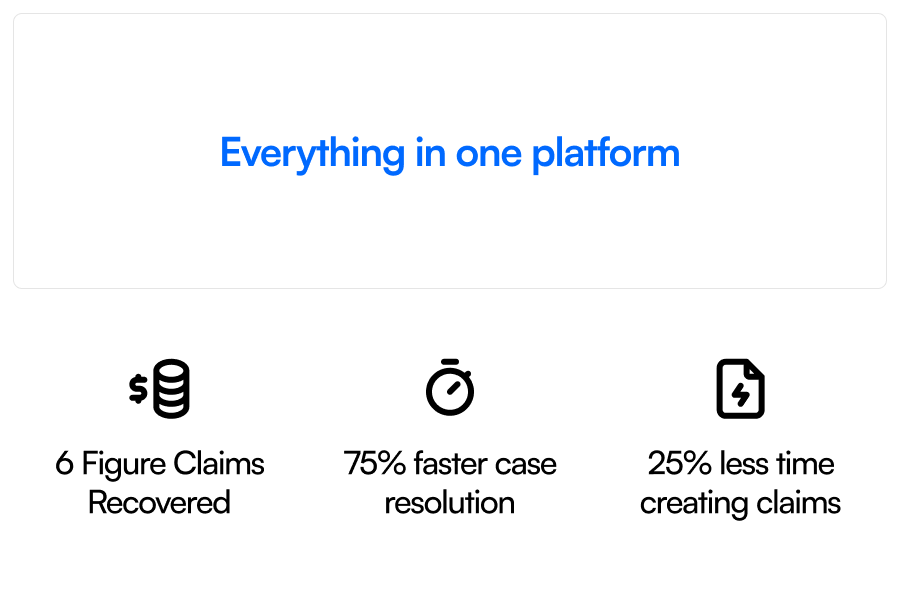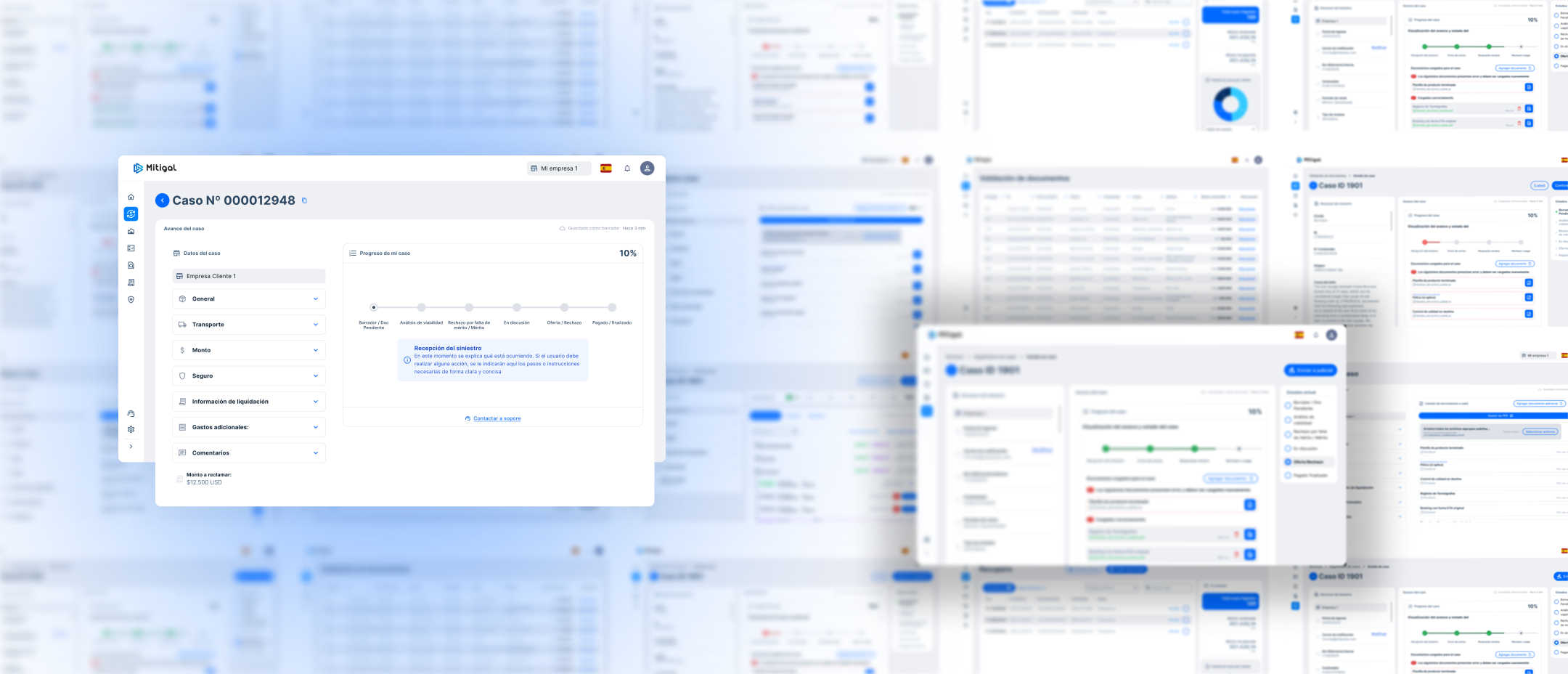
I led the end-to-end design of Mitigal, a B2B web platform that simplifies and accelerates risk management processes for international freight forwarders and cargo operators in Chile. The solution integrates incident reporting, insurance handling, and future financial services into a single AI-powered system, replacing disjointed and manual industry processes with a fully digital, role-based experience.
Working from the concept stage in collaboration with the founders, I defined the product architecture, created the information structure, validated user flows, and designed a responsive interface aligned with brand and business objectives. My involvement spanned UX research, prototyping, UI design, brand collaboration, and implementation handoff.
Mitigal is a B2B web platform that helps freight forwarders manage cargo incident claims, insurance, and future financing in a unified, AI-supported experience. Developed by Kefi, it responds to the fragmented and manual workflows that dominate maritime logistics in Chile.
As the Product Designer, I led the UX strategy, defined the product architecture, and designed all key flows and interfaces from scratch. I collaborated closely with the CEO, product owner, and legal experts to translate complex regulations into usable, scalable solutions. My work included end-to-end research, prototyping, testing, and the creation of a responsive design system ready for implementation.

Freight forwarders face high-value losses due to disconnected systems and slow, manual claims processes. Filing incidents requires navigating insurers, shipping lines, and legal procedures, often with little guidance or standardization.
The traditional tools available to manage these incidents are fragmented:
Existing tools are fragmented. Users rely on emails, spreadsheets, and PDFs to coordinate multi-party workflows, leading to delays, errors, and missed opportunities for reimbursement.
Strict policy conditions and regulatory requirements further complicate the process. Many claims go unfiled or are rejected due to incorrect documentation or missed deadlines.
Mitigal addresses this by integrating claims, insurance, and documentation into a single digital platform, reducing friction, increasing success rates, and enabling faster recovery of cargo-related losses.
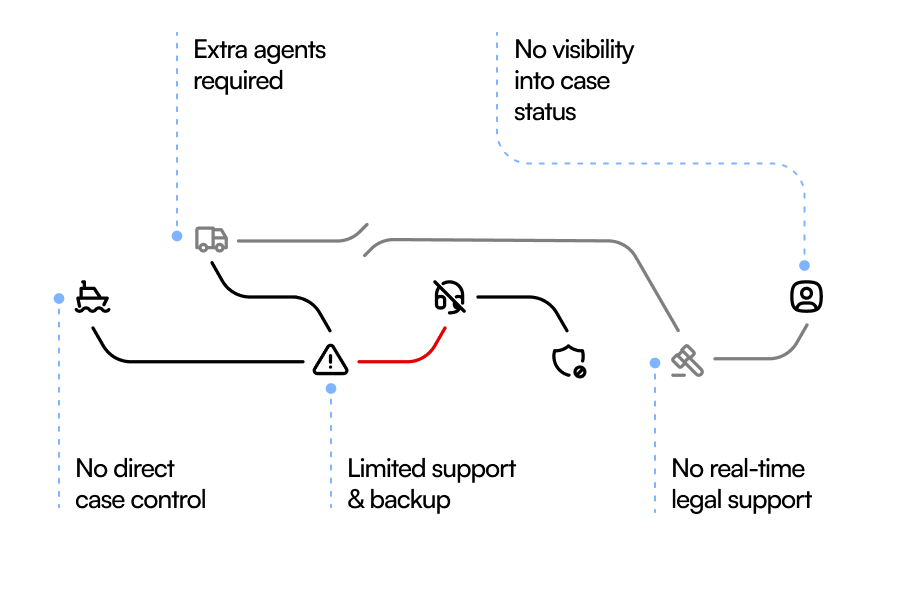
Maritime cargo represents over 90% of Chile’s international trade by volume, with millions of dollars lost annually due to unclaimed incidents and delayed reimbursements. The lack of integrated digital tools prevents freight forwarders from recovering high-value losses efficiently.
Mitigal was designed as a role-based B2B web platform that allows freight forwarders and cargo operators to manage incident claims and insurance policies from a single, centralized interface. The platform connects users with insurers, shipping lines, and legal protocols through standardized workflows powered by business rules and AI.
I worked closely with Kefi’s leadership to co-define the product vision, aligning it with both business goals and regulatory constraints in the maritime logistics sector. Early in the process, I reviewed internal market research, regulatory documents, and competitive benchmarks shared by the business team, which helped frame the product's strategic opportunity and technical boundaries.
The product structure was shaped through early mapping of user roles, legal workflows, and system requirements. A dual-portal architecture was defined to separate client-side interactions (filing, tracking, documentation) from internal case management tasks (validation, resolution, external coordination). This approach improved clarity, data security, and scalability. Flows were aligned with backend logic using collaborative tools like FigJam, ensuring a seamless connection between UX, business rules, and development architecture.
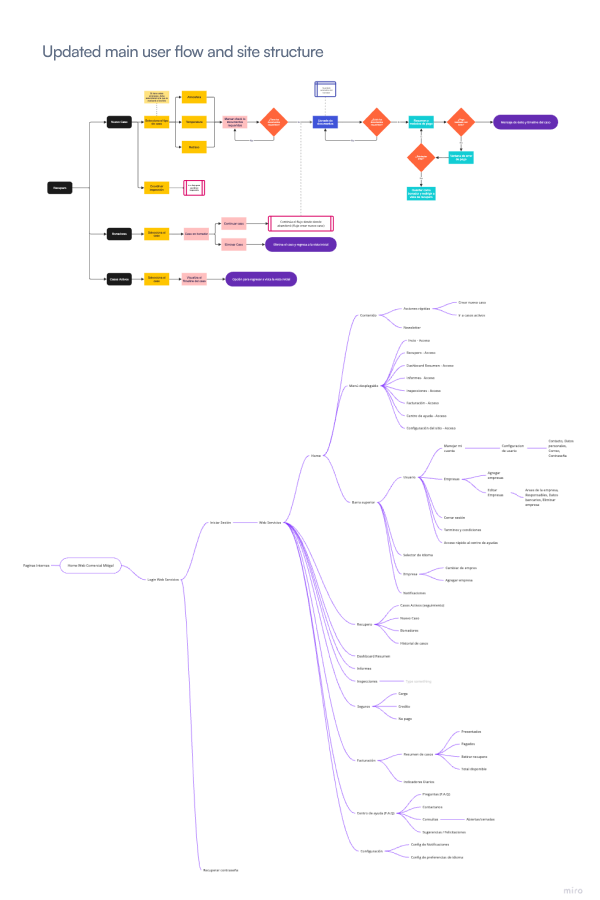
I designed the core flows in low-fidelity wireframes and conducted usability testing with real users (freight forwarders and logistics clients) who regularly face shipping incidents. These sessions validated the IA and task logic for:
Insights from testing led to key improvements, including an in-platform PDF organizer that allowed users to rearrange and clean their case documentation, reducing dependency on external tools and cutting case creation time by 25%.
Once validated, I created a responsive UI kit tailored to Mitigal’s brand identity, scalable across breakpoints (desktop, tablet, mobile). The components were designed with system reusability and accessibility in mind, ensuring developers could integrate the design consistently. Key design decisions included:

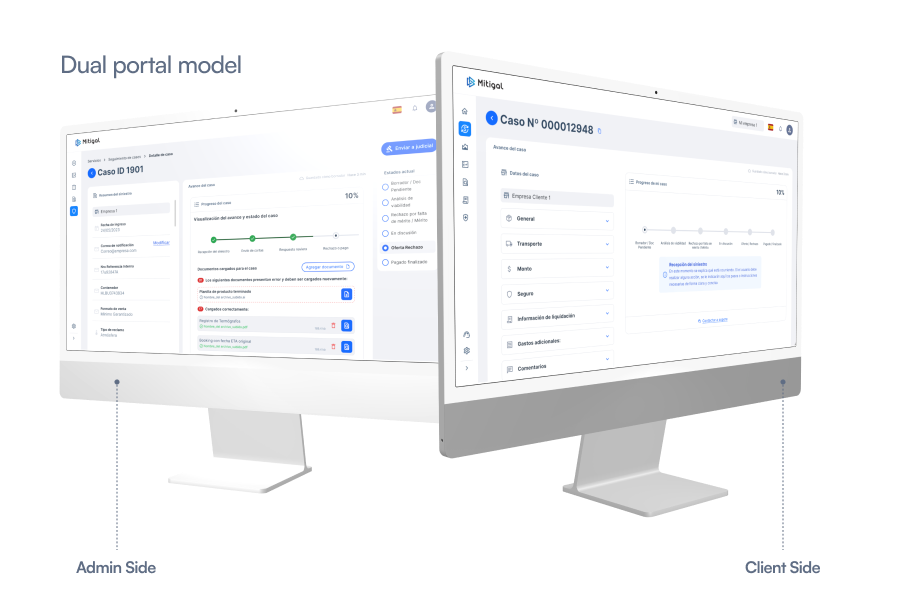
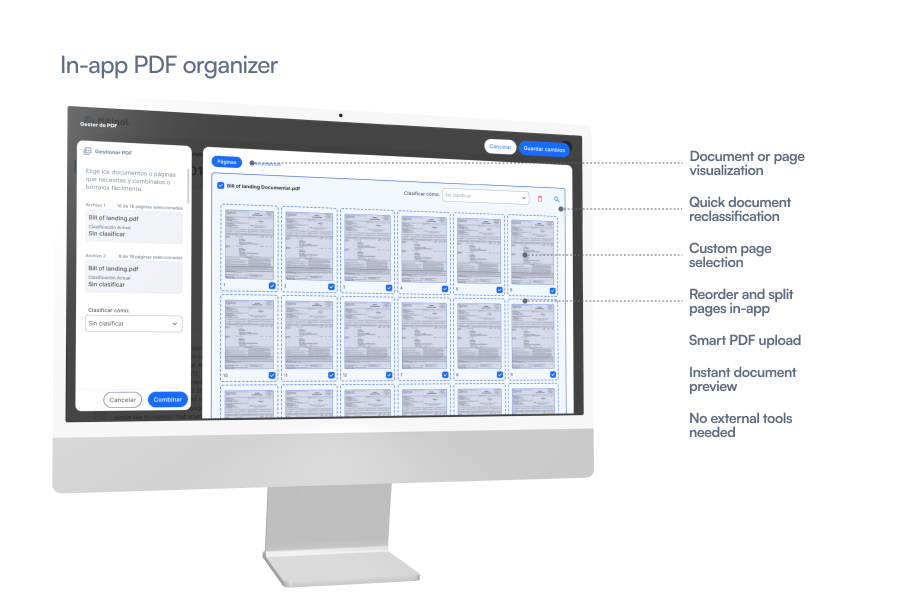
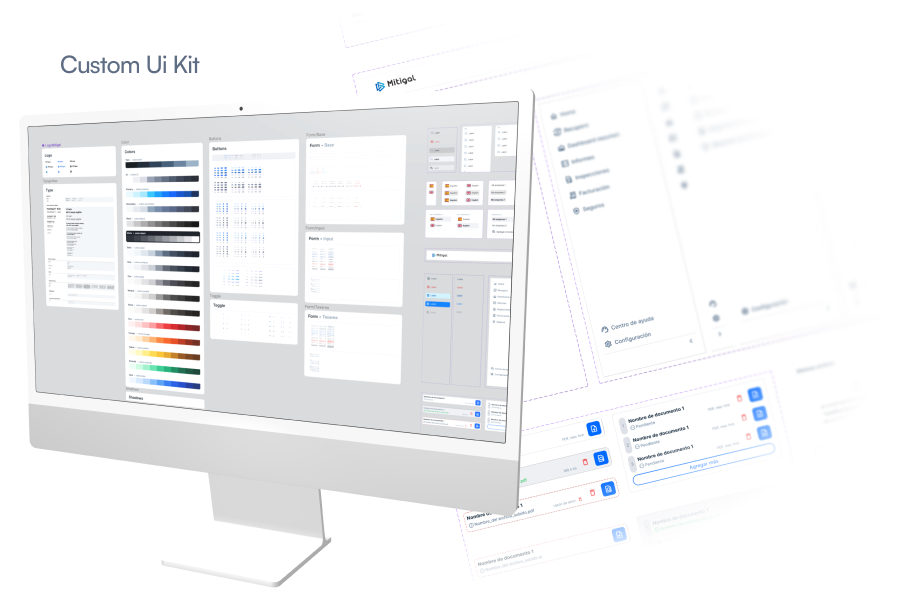
Freight forwarders handle thousands of cargo shipments under time-sensitive conditions, yet most still rely on disconnected systems to manage incidents and insurance.
Mitigal's launch marked a significant shift in how freight forwarders and cargo clients manage maritime risk in Chile. By consolidating incident reporting, insurance handling, and (future) financial tools into a single platform, the solution replaced what was previously a fragmented, paper-based system, reducing friction, accelerating reimbursements, and enabling claim recovery at scale.
